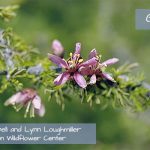The monarchs butterflies may have moved on, but plenty of other butterflies are visiting the area and gracing our nectar plants. Won’t you welcome them with open arms and a garden planted just for pollinators?
The monarch butterfly migration is winding down, but plenty of other butterflies are visiting the area and gracing our nectar plants including snouts, fritillaries, queens and swallowtails. Why not make them feel welcome by joining the 300for300 pollinator garden initiative?
Organized by the Texas Butterfly Ranch, the group has been working since the spring with community collaborators to create 300 pollinator gardens for San Antonio’s 300th birthday. So far the effort has more than 200 gardens registered.
In 2015, San Antonio became the first city in the country to become a monarch butterfly champion city by agreeing to execute all 24 recommended actions to increase pollinator habitat (pdf) in San Antonio.
One of the action items pledged: stage a community wide pollinator gardening initiative. For 300for300, size doesn’t matter, diversity does. You could even do a pocket prairie inside a whisky barrel — as long as it contains at least six native or well-adapted (non-invasive) plants that provide habitat, spring and fall blooms.
Thoughtful plant choices up front pay off long term. Once established, pollinator gardens typically require less water, fertilizer, tending and maintenance than your typical tidy lawn with nonnative flowerbeds. When your garden is teaming with bees, butterflies, birds and other wildlife, you’ll appreciate the extra effort.
If you’ve taken advantage of our WaterSaver Landscape coupons, it’s possible you already have met the requirements. If you have, consider registering your yard as a pollinator 300for300 habitat!
The first requirement is to include at least two larval host plants. These are the particular plants on which butterflies lay their eggs. Milkweeds (any), asters, cenizo, flame acanthus, Mexican buckeye, Texas mountain laurel, Texas redbud, frogfruit, inland sea oats, yaupon Holly and twistleaf yucca all fit the bill.
You’ll also need at least two spring nectar plants, or plants that bloom in the spring. These provide fuel for butterflies. Salvias, blue nolina, damianita, esperanza, skullcaps, asters or other plants that you see fit for this category. See more resources here.
Finally, include at least two plants that bloom in the fall. Copper canyon daisy, Mexican mint marigold, Spanish dagger, Turks cap, duranta, mistflowers, fall aster and some of the aforementioned plants with extended blooming seasons.
Also recommended: a shallow puddle or other recessed water source gives butterflies a place to hydrate and slurp up minerals. Dead brush and spent leaves should remain untouched until spring to provide shelter and nesting areas. And always avoid pesticides.
Time to get busy! And don’t forget to register your garden as a 300for300 pollinator habitat today!




